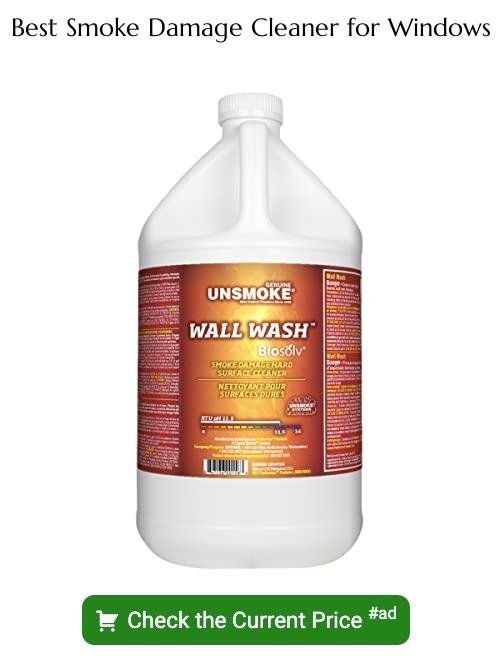This blog post offers effective steps to clean smoke damage from your windows, restoring their clarity and enhancing your home’s appearance.
Smoke damage on windows can be a challenging issue, but with the right approach, it’s entirely manageable. The key is to use a combination of vinegar and water solution, followed by a baking soda paste for stubborn stains. This method effectively removes the soot and smoke residue, leaving your windows sparkling clean.
However, it’s not just about the cleaning process itself; preventative measures and regular maintenance are equally important. This article will guide you through each step in detail, ensuring you have all the information you need to effectively tackle smoke damage on your windows.
Key takeaways:
- Use vinegar and water solution to clean smoke damage.
- Gather necessary tools: gloves, face mask, sponge, bucket, towels.
- Visible signs of smoke damage: black film, discoloration, cloudiness.
- Scrub gently, rinse thoroughly, and dry to clean smoke off windows.
- Use warm water, dish soap, vinegar, microfiber cloths to clean.
Necessary Tools for Smoke Damage Cleanup

To begin the smoke damage cleanup on your windows effectively, having the right tools on hand is essential. Start with gathering the basics like rubber gloves and a face mask for safety. You’ll want a bucket for your cleaning solution, a large sponge or scrub brush for application, and towels or paper towels for drying. Plastic drop cloths can be used to protect the floor and surrounding areas from the cleaning solution.
When it comes to the cleaning agents, regular dish soap can work well for light damage. For thicker layers of soot or heavier damage, a commercially available cleaning agent specifically designed for smoke or soot removal will be more effective. Remember to also have a vacuum with an upholstery attachment for removing loose soot particles. Lastly, ensure you have a ladder or step stool to reach higher windows safely.
What Does Smoke Damage Look Like On Windows?
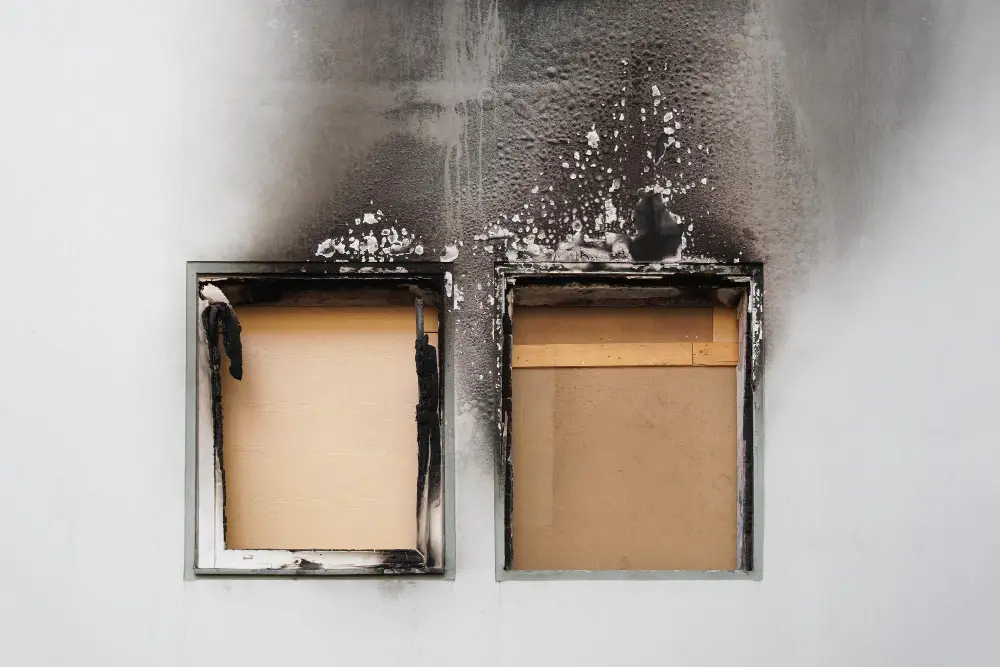
Smoke damage manifests itself in several distinct ways on windows. Visible signs of smoke damage include a black or gray film that blankets the glass, caused by tiny particles of soot clinging to the surface. Another common sign is a yellow or brown discoloration of the window pane, reflecting the presence of nicotine and tar deposits, which is particularly prevalent if tobacco was a component of the fire. In severe cases, windows may even exhibit a cloudy or foggy appearance. This damage is not just superficial and can potentially lead to permanent etching of the glass over time if not addressed.
To prevent further damage and restore the clarity of your windows following smoke damage:
- Start by donning protective gear, including gloves and a mask.
- Use a vacuum cleaner with a brush attachment to sweep off loose soot particles.
- Wipe any remaining soot with a dry sponge.
- Apply a cleaning solution specifically designed for smoke damage, and gently scrub the surface.
- Rinse the window thoroughly with clean water.
- Dry the window using a soft, lint-free cloth to avoid causing scratches.
Remember, the quicker you act, the better your chances are of successfully restoring your windows to their original condition.
How to Clean Smoke Off Windows

Begin by ensuring you are wearing protective gloves to prevent any irritation from the smoke residue. This task involves a process of three main steps: applying a cleaning solution, scrubbing gently, and rinsing thoroughly.
Prepare a mixture of one part vinegar to four parts water. This acts as a natural degreaser to tackle the smoky residue. Pour the mixture into a spray bottle for easy application.
Spray the solution generously onto the window surface. Allow it to sit for about ten minutes. This soaking period aids in loosening up the hard-to-remove soot particles.
Post soaking, use a sponge or soft cloth to scrub the surface gently. Remember, too much pressure can risk scratching the glass. A circular scrubbing motion often works best to lift and remove the smoke residue.
After the scrubbing process, grab a hose or a bucket of clean water, and rinse the window. Make sure to remove all the vinegar and soot residue. It is essential to thoroughly clean the window to prevent any further damage from leftover residue.
Last but not the least, dry the window using a squeegee or a lint-free cloth. This step prevents any water spots from forming, giving you a clean and clear window. Remember, time is of the essence; the quicker you remove the smoke damage, the less likely it is to cause permanent discoloration or odors.
What to Use to Clean Smoke Damage On Windows
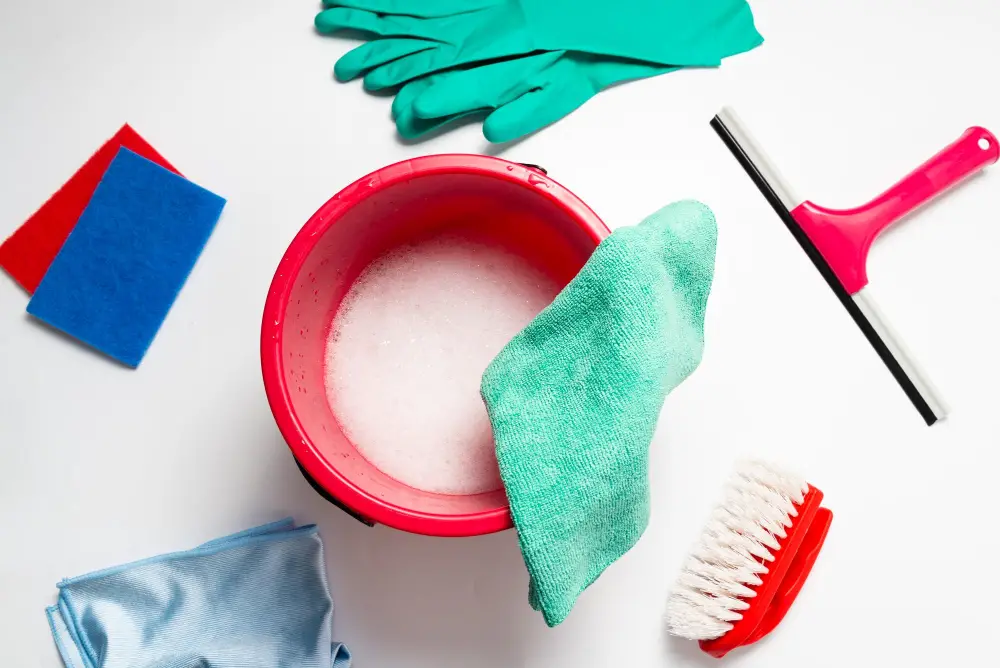
For an effective cleanup, the correct tools are essential:
- Clear warm water: Warm water enhances the cleaning power of detergents and loosens soot more effectively.
- Mild dish soap: This acts as a gentle yet effective cleaning agent that won’t damage the glass.
- White vinegar: A natural cleaner that cuts through grimy residue, which is often left behind after a smoke incident.
- Microfiber cloths: They have fine fibers that trap dirt and are gentle on surfaces, ensuring your windows don’t get scratched during the cleaning process.
- Squeegee or window wiper: Ideal for wiping off excess water and leaving your windows streak-free.
- Rubber gloves: These will protect your hands from irritants during cleaning.
Firstly, mix equal parts of vinegar and warm water with a few drops of dish soap. Apply this solution with a cloth to the affected area and scrub gently. Be sure to clean one small area at a time to prevent the solution from drying out on the window. Use a squeegee or window wiper to remove the excess water. Finally, use a dry cloth to wipe any remaining water, and repeat the process until all the smoke residue is removed.
The warm soap water and white vinegar effectively clean the window while the wiper and dry cloth ensure a streak-free final look.
How to Clean Smoke Stained Glass
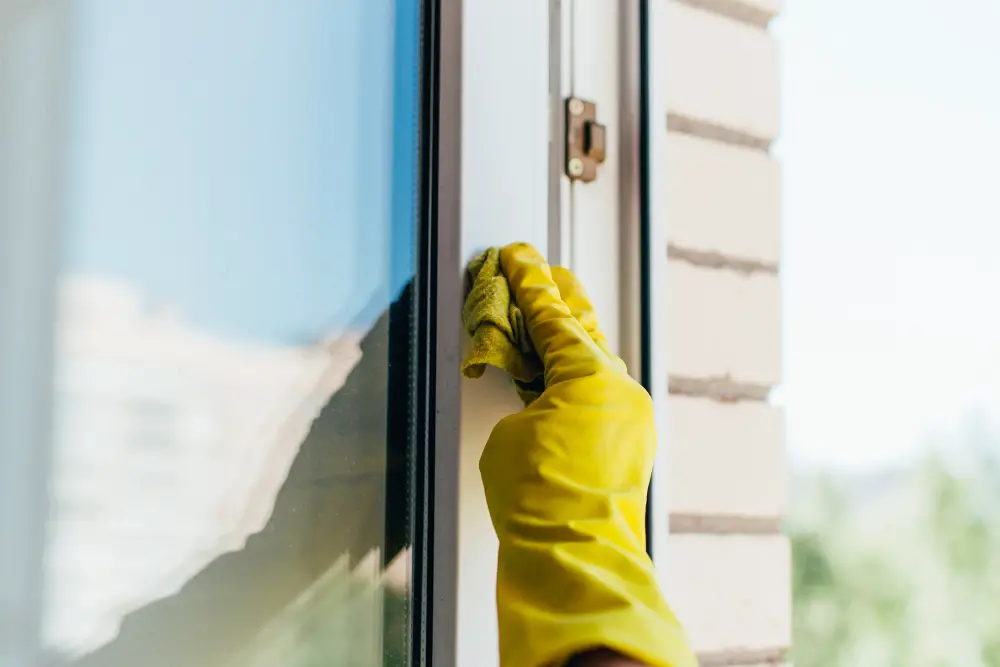
Begin by donning protective gloves and a dust mask for safety. With a soft, dry cloth, gently wipe away any surface soot from the window. It’s important not to scrub at this stage to avoid grinding the soot into the glass.
Now make a cleaning solution. Dilute one cup of white vinegar into a gallon of warm water. Alternatively, a commercially available smoke damage cleaning solvent can also be used. Always follow the instructions provided by the manufacturer.
Dip a soft sponge into the cleaning solution and squeeze out any excess. Then, gently apply the wet sponge to the smoke-stained glass in a circular motion. Start from the top and gradually work your way towards the bottom of the window. Reload the sponge with the cleaning solution as necessary.
Next, clean off the loosened soot and cleaning solution. Using a squeegee, start from the top of the window and pull it downwards to remove the cleaning solution and dissolved soot. Wipe the squeegee blade with a clean cloth after each swipe to prevent redistributing soot. Repeat this step until you have cleaned the entire window.
Finally, use a dry, lint-free cloth to wipe the window dry. Ensure no streaks are left behind as they can permanently etch the glass if not cleaned promptly. Repeat the cleaning process if any smoke stains remain.
Remember to clean the window frames and sills with a soapy solution and a scrub brush to complete the restoration process.
Removing the Smoke Odor From Windows After Cleaning
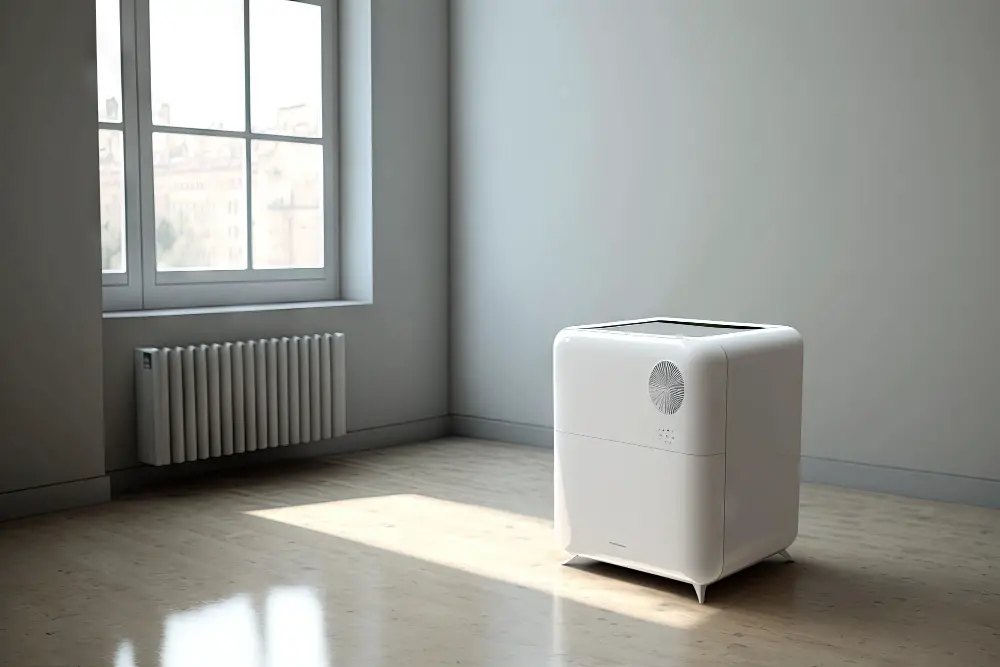
After the physical stains have been cleared away, lingering smoke odor may still be present. This persistent issue can be addressed effectively with a few simple steps:
First, ventilate your home thoroughly. This step can include opening all windows and doors to allow fresh air in, and to let the smoke odor out.
Next, consider using an air purifier with activated charcoal filters. These purifiers work by trapping airborne particles including smoke, helping to clear the air.
If the smell persists, a specialized smoke odor eliminator spray could be of use. These sprays can neutralize the smoke odor on contact, and are suitable for use on most surfaces, including glass.
For harsher smells, create a deodorizing mixture. Combine one part white vinegar with two parts water, spray it onto the windows, and wipe clean. The acid in the vinegar cuts through the odor, leaving a fresh smell behind.
Finally, consider placing bowls of baking soda near the cleaned windows. Baking soda is a natural odor absorber and should help remove any remaining smells. Leave them for a day or two for optimal results.
Remember to always spot test any spray or mixture on a small, unnoticeable area of your window to avoid damaging the glass or frame.
By undertaking these odor eliminating procedures, you aid in the complete removal of smoke damage on windows.
Vacuum All Soot and Ash Off Windows
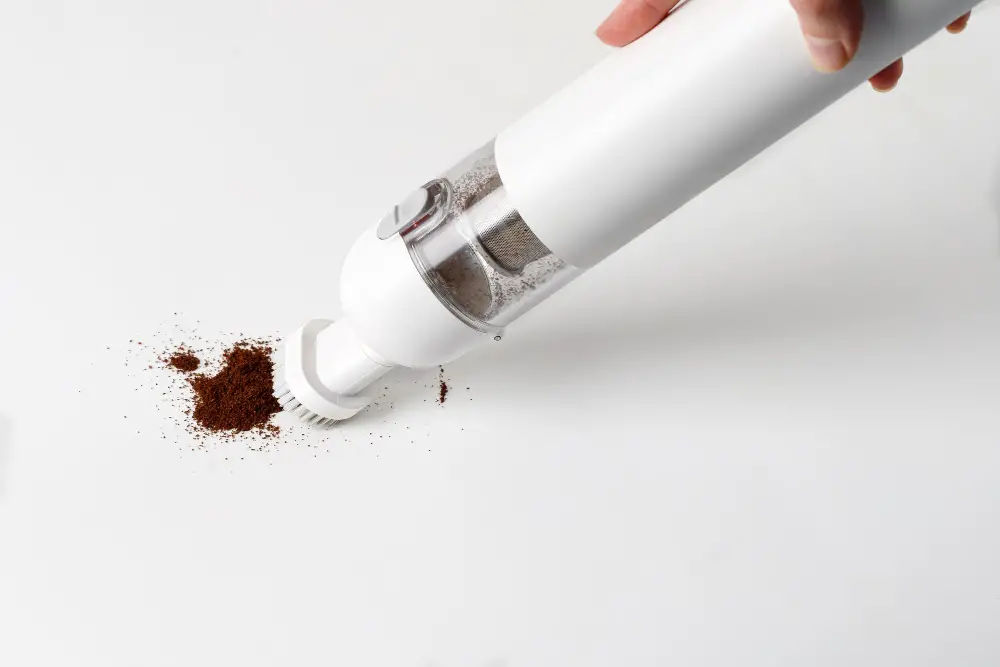
Start by gathering necessary tools such as a vacuum with a brush attachment and a pair of gloves for safety. First, always ensure that windows are dry before attempting to vacuum them. Wet ash and soot can rub and scratch window surfaces, possibly causing irreparable damage. Use the brush attachment to gently vacuum off all loose soot and ash. Avoid applying too much pressure as this may drive the soot further into the window’s surface.
Perform this cleaning process carefully and methodically, making sure to reach all corners and edges of the window. Remember to frequently empty the vacuum’s canister to ensure optimal suction and efficiency.
While vacuuming, it’s important to be mindful of your safety. Wear a dust mask to prevent inhaling fine soot particles. It’s also recommended to wipe down the vacuum and its parts with a damp cloth on completion, to prevent the spread of soot.
Please note that vacuuming alone won’t necessarily get rid of the smoky smell, but it’s a crucial first step in the process. Note that some window materials might need special care, thus it’s important to verify your cleaning method matches the window material. If in doubt, turning to professional help best ensures safe and effective cleanup.
Can Smoke Damage Be Removed From Windows?
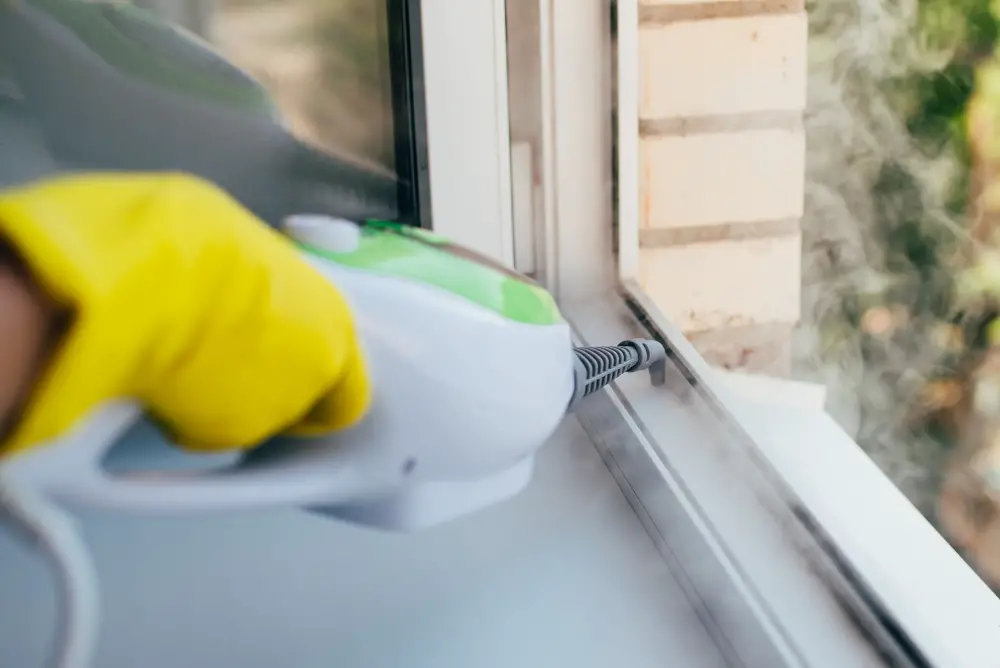
Smoke damage can indeed be removed from windows with the right tools and methods.
Firstly, it’s crucial to identify the type of smoke damage. Is it a light soot or a heavy deposit? This factor determines the intensity of cleaning needed as well as the cleaning materials.
Next, consider using rubber gloves and a dust mask for safety. This is particularly crucial if the damage is a result of a house fire, as there might be potentially harmful substances left on the window.
Vacuuming the window before deep cleaning helps to get rid of loose soot. Use the vacuum’s brush attachment and gently sweep across the window, removing as much soot as possible.
After vacuuming, soap and water can address some minor damage. If this doesn’t work or if the damage is too severe, equip yourself with a smoke damage removal product. Many formulas are available at stores which are specifically designed to address smoke stains.
Remember, when deep cleaning, always start from the top and work your way down to prevent streaks of soot running across clean areas.
Finally, treat your windows with an ozone treatment, which helps to remove the stubborn smell of smoke. This step is essential for complete smoke damage removal as it aids in eliminating the persistent, unpleasant aftermath of smoke damage.
Ozone Treatment for Smoke Damage On Windows
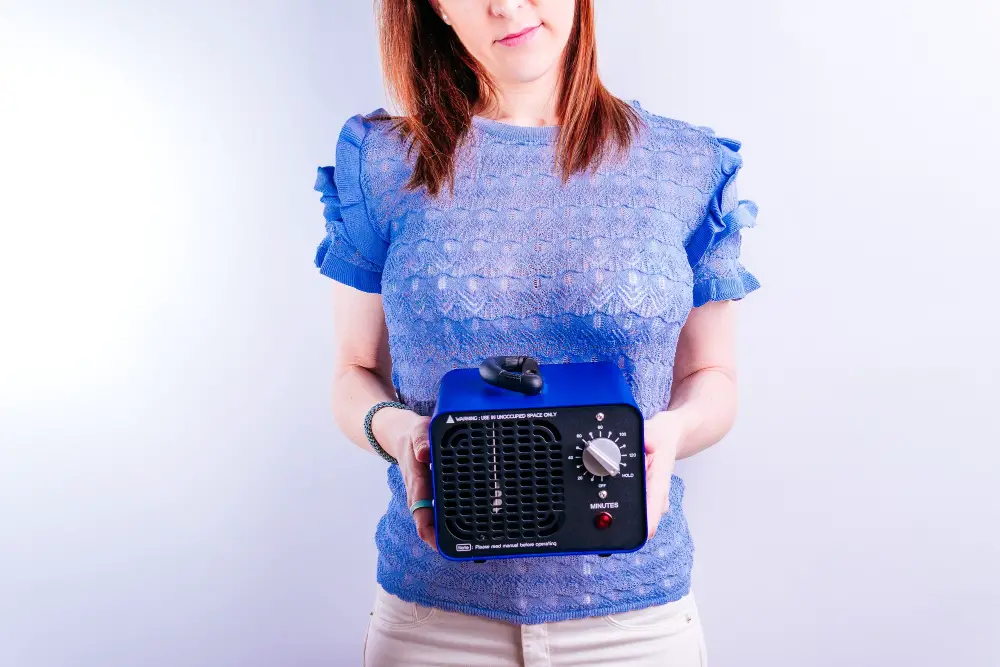
An ozone generator is a beneficial tool in the restoration process because it effectively eliminates smoke odors.
Firstly, choose the right size generator. The size needed usually depends on the dimensions of your window spaces.
After acquiring a generator, prepare the room by ensuring to close all windows and doors, preventing the ozone from seeping into other areas of the house.
Next, place the generator near the windows where the smoke damage is most apparent. Remember to keep off any household plants or pets, as ozone can be harmful to them.
Now, set the timer according to the manufacturer’s instructions and allow the ozone to circulate.
Once the treatment finishes, open the windows to air out the ozone and freshen your room.
Lastly, clean the window surfaces to add a final touch, completing the smoke damage restoration process.
This method is an effective way of removing stubborn smoke odors but it’s important to operate ozone generators correctly, according to the manufacturer’s instructions.
FAQ
How do you remove smoke damage from windows?
To remove smoke damage from windows, you first need to wipe down the glass with a standard glass cleaner and paper towels, followed by using trisodium phosphate or a blend of water and white vinegar to handle any residual soot or grime.
How do you clean smoke damaged glass?
To clean smoke-damaged glass, immerse it in a solution of warm water and liquid detergent, let it stand for 1-2 minutes, and then gently wipe the surface with a cotton swab to remove the loosened soot.
What is the best solution to clean smoke damage?
The best solution to clean smoke damage is by using a mixture of 4 to 6 tablespoons of tri-sodium phosphate and 1 cup of household cleaner or chlorine bleach added to every gallon of warm water, while wearing rubber gloves.
How do you clean windows after a house fire?
After a house fire, windows can be cleaned effectively by scrubbing thoroughly to remove accumulated residues, utilising cotton swabs for tiny crevices, then rinsing with hot water using a microfiber cloth and finishing with a quality window cleaner.
What are the steps for safely removing smoke residue from window frames?
To safely remove smoke residue from window frames, you’ll need to don protective gloves, prepare a mixture of vinegar and warm water, dip a soft cloth in the solution, thoroughly wipe down the frames, and finish off by drying them with a clean, dry towel.
What are recommended professional products for cleansing smoke-damaged windows?
Professional products recommended for cleansing smoke-damaged windows include Simple Green, Trisodium Phosphate (TSP), and commercial-grade window cleaners like Windex or Zep.
How often should smoke-damaged windows be cleaned to prevent long-term damage?
Smoke-damaged windows should be cleaned immediately and thoroughly to prevent long-term damage.
Recap
